Search Posts
Recent Posts
- The Long Goodbye January 18, 2024
- Once More Around the Mulberry Bush January 9, 2024
- The Wash December 28, 2023
- The Truth About Carver Dogs December 1, 2021
- The Question of Pain November 9, 2021
Categories
Subscribe!
Thanks for subscribing! Please check your email for further instructions.
The Puritiy Obsession
It is easy to see why purity has been highly valued. Gold is an example. It has never had much industrial value, but it has nonetheless been a highly prized metal because of its scarcity and beauty. The only problem is that pure gold is much too soft and malleable for use for regular commerce in coins, so it has to be amalgamated with some other metal. So the question was always just how pure any particular amalgam of gold was. A famous story about Archimedes, the renowned Greek scientist, involved his being requested to determine the purity of a gold crown commissioned by an ancient king. Archimedes could determine the purity by weight if he could only determine the volume of the odd-shaped crown. He was able to do it by measuring how much water it displaced, and it turned out that the crown did not contain as much gold as had been claimed by the smith who had made the crown. That was bad news for the artisan, as he was soon beheaded, for he had run afoul of an obsession with purity.
But what about dog breeds? Here again, purity is an obsession. As an example, any individual of a breed that is bred to a dog of a different breed produces progeny that are labeled “mongrels.†Pure bred dogs always are worth more money than mongrels, at least as puppies, and “mongrel†is certainly a pejorative term. However, it is not without cause. We can tell from contemporary artwork from ancient times that even those people learned that it is best to keep breeds pure. The very existence of those breeds tells us that, for you cannot have such breeds as Greyhounds if no attempt is made to keep them pure. The process undoubtedly was a simple matter of breeding the fastest dogs to the fastest, and keep doing that in subsequent generations. But any time some yahoo made an outcross to some other breed, there would be a very noticeable setback. Now, we can only assume that these people of ancient civilizations noticed such results. And why not? They were just as smart as we are—they just didn’t have our advanced technology! In any case, one of the things they obviously learned was to keep the specialist breeds pure. And the truth is that you need to keep even strains of fancy dogs and lap dogs pure, too, if you want to keep certain traits, such as small size or a unique appearance.
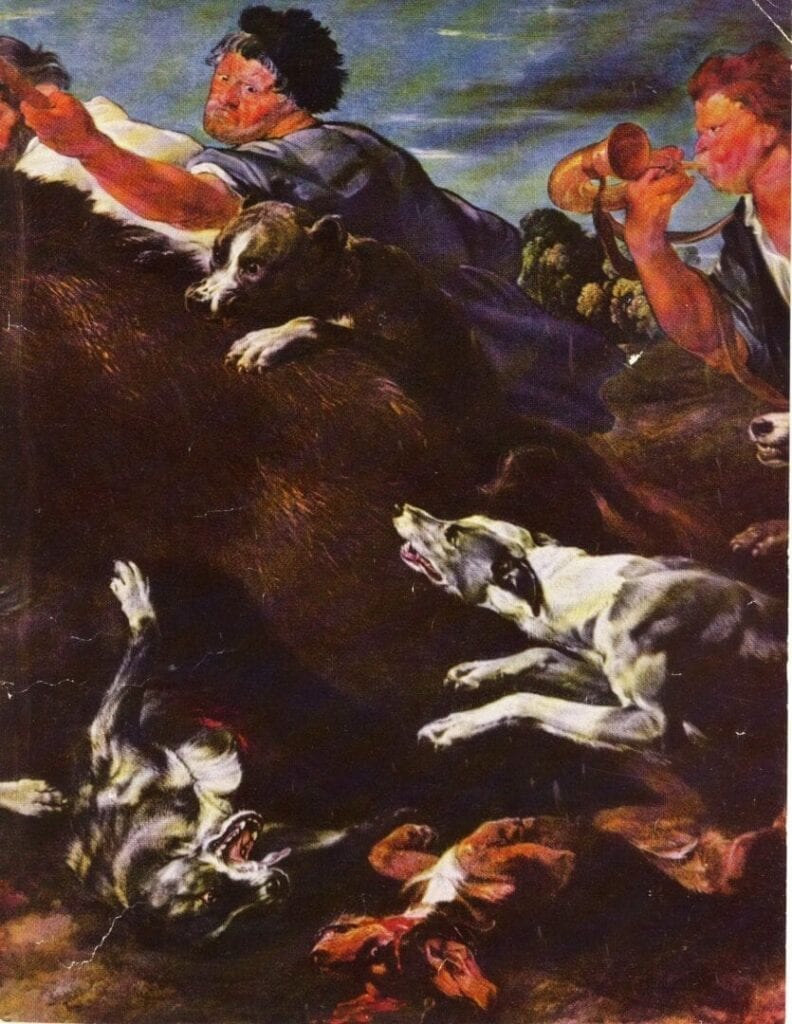
It is pretty much self-evident, then, that we need to keep the different breeds pure if we want to maintain their respective characteristics. That is, the speed of the Greyhound, the herding ability of a Border Collie, and the tracking ability of the Coonhound, not to mention the appearance of the various show breeds, are all characteristics that would be lost with a cross to another breed. But there are strains within many of the various breeds, too—even the show breeds—and many breeders practice keeping those strains pure, too. What is the reason for that?
The short answer is that breeders develop a preference for a certain strain. Most of us learn from long experience that there is no best line, but you would have a hard time convincing many breeders and fans of different strains of that very fact. Some strains are better than others, of course, but what makes them that way? Is it because the strains are pure? Or was the foundations stock of higher quality? Perhaps a more important factor would be the selection of current breeding stock by the breeders? Let’s consider some of the popular old strains and then come back to think once again about the factors that made the strains so popular and successful.
Colby
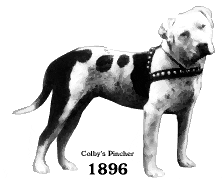
This is undoubtedly the oldest pure line in this country. Like any line, it has its detractors, but some of the best dog men have been supporters and breeders of the line. It was originated by John P. Colby back in the 19th century. He knew about the good dogs coming in from Ireland with the immigrants, and he would get ownership of some of those dogs, or breeding rights to them, and he eventually established his own line.
Our breed is the only one that comes to mind in which it is frowned upon to sell dogs to the general public. But Colby went against that trend, and he advertised widely and shipped dogs all over the country. Although a few individuals criticized him for doing that, he was generally admired and liked. Many other strains, such as the once-famous Henry line and, possibly, the latter-day Lightner dogs, originated from Colby dogs. Famous breeders, such as Howard Heinzl, Pete Sparks, and John Fonseca, revered the Colby line above all others. In addition, some of John P. Colby’s sons, most notably Louis B. Colby, have helped perpetuate the line.
Because of the fact that Colby sold to the general public and that others helped breed the line and kept it pure, there are probably more Colby dogs than any other line back in the pedigrees of today’s dogs. Indeed it would be difficult to find a modern dog that didn’t have a Colby dog some place back in its pedigree. It is a simple matter of tracing it back far enough.
Old Family Red Nose
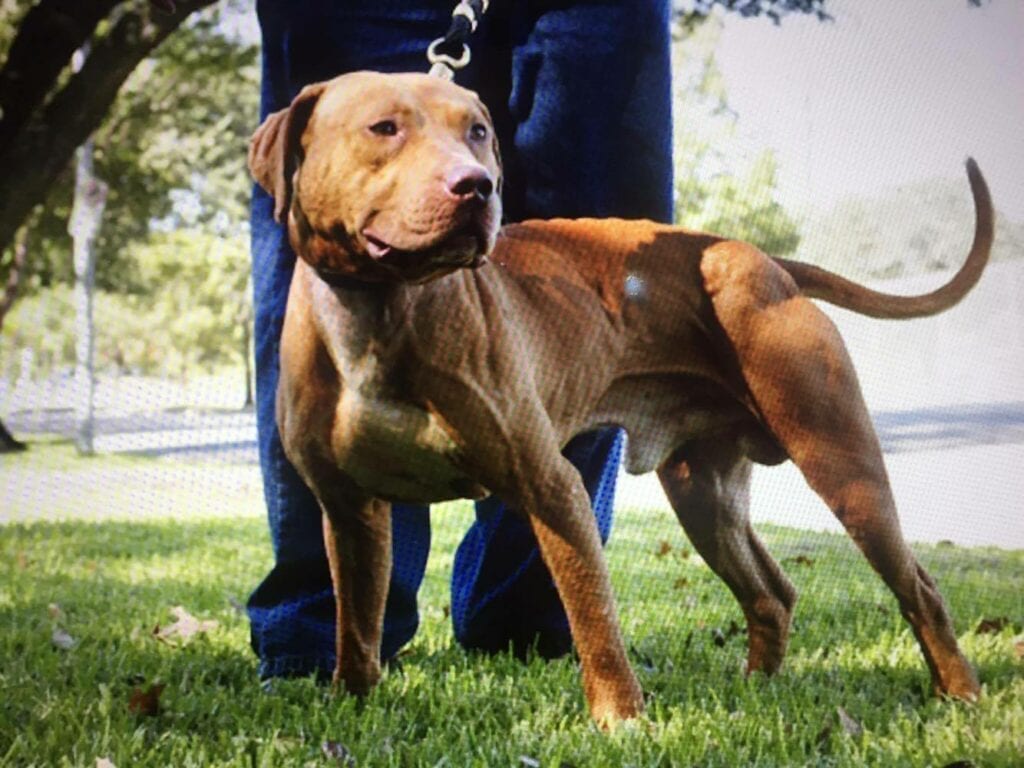
Here is a case where close family breeding by a lot of different people produced a strain. It is a fact that inbred dogs have a tendency to slide toward recessive traits. And it was the lack of a pigment trait that produced the strain that eventually became quite renowned and became known as the Old Family Red Nose line. Although the strain originated mainly from Lightner dogs, this was a situation in which a lot of people were breeding from the same foundation stock without any real intention of calling it a strain. According to Hemphill, it was Dan McCoy who first started calling the line by the name we know it today. McCoy had been born in Ireland, and he knew about the dogs there that were called Old Family dogs. They were nearly all red, as red is recessive to most other colors. McCoy was quite knowledgeable as to the breeding of dogs, and his opinion was highly respected.
The thing that got the Old Family Red Nose a lot of attention was that two of the greatest dogs in the country, Ferguson’s Centipede and Harvey’s Red Devil, were from that line. It helped that some very respected breeders took an interest in the line and not only utilized it, but helped to improve its quality. That was one of the things that kept the OFRN line great, the caliber of the breeders that were breeding it. It is interesting to note that several people were involved in perpetuating the line. Dan McCoy traveled the country as an itinerant fry cook for the oil companies, and he was able to tell interested breeders where the good dogs were. Apparently, he had an uncanny ability for picking breedings that would work out, as many that he had helped arrange produced some outstanding litters.
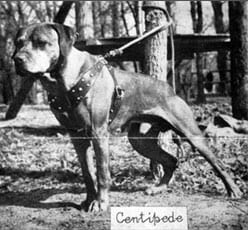
Unfortunately, there are probably no pure Old Family Red Nose dogs alive today without some outcrosses in their lineage. Nevertheless, there are many replicas of the great old dogs that helped to build this line. There have been some great dogs, such as Tombstone and his son Tonka, that looked just like the Old Family Red Nose line, even if they weren’t pure representatives.
Wallace
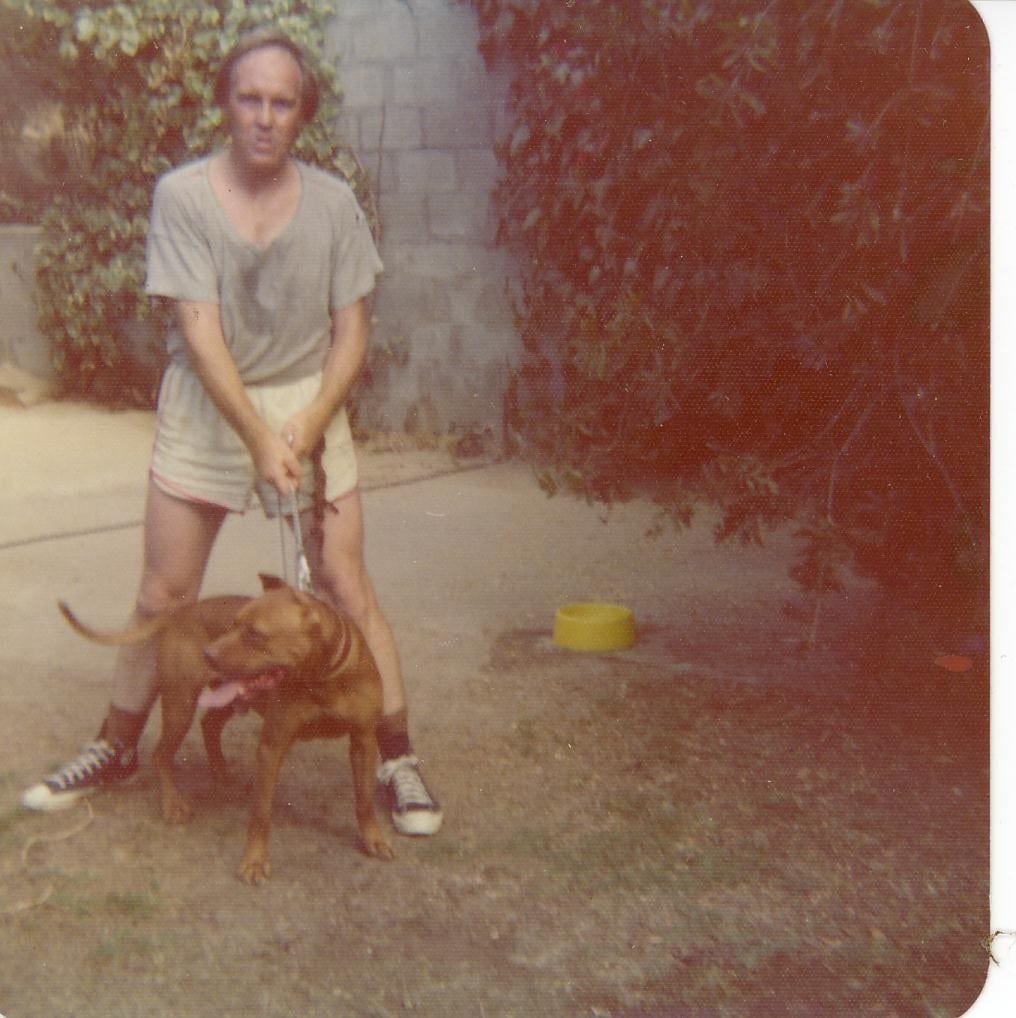
I considered not discussing this line, as there is so little of it around today, certainly not in a pure form. That is because, unlike Colby, Wallace would not sell dogs to the general public. The price of that was for Wallace to see the extinction of his line (as a pure strain) within his own life time. Because it was such a quality line and because I know so much about it, I am going to cover it here.
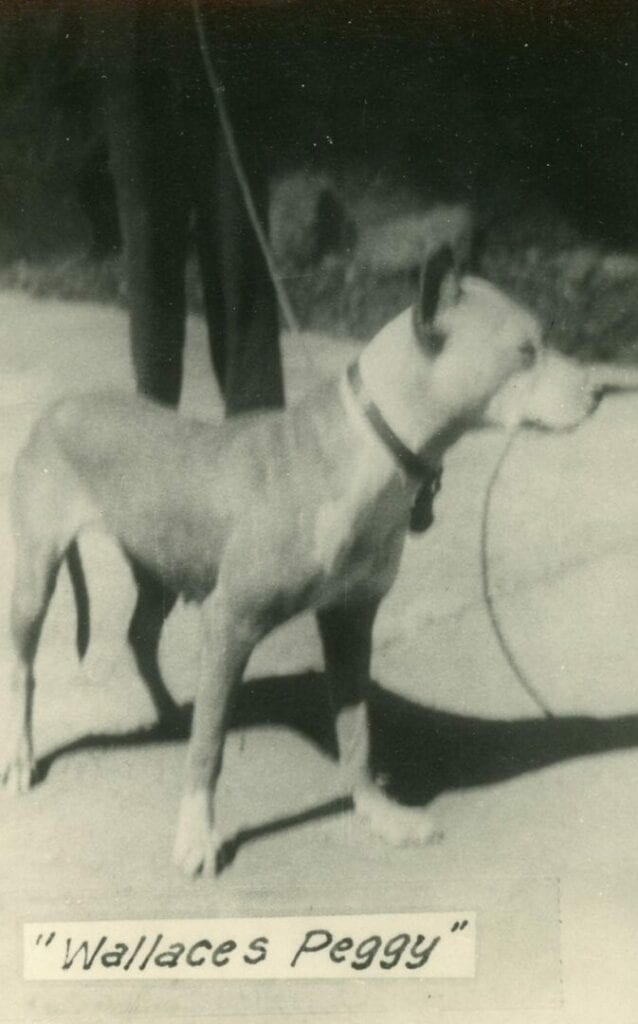
When Wallace got his line started, he began with Shipley’s Penny, a bitch that was given to him by his good friend and mentor, Jim Shipley. Bob utilized Penny as his foundation, and he bred her to the most famous dog in the country at that time, Hall’s Searcy Jeff, owned at the time by Dr. Paul Hall. Later, Bob was able to purchase Searcy Jeff, so he utilized him for several breedings. He produced several great dogs, such as Toney, King Cotton, and Pistol Pete. When it came time for Wallace to utilize an outcross, he used the Old Family Red Nose line, as Searcy Jeff’s sire, Hemphill’s Broke Jaw, was of that line. Consequently, the latter day Wallace dogs all looked like pure Old Family Red Nose, even though they were descended from Jeff, Toney, and King Cotton, as well as Bob’s other great old dogs.
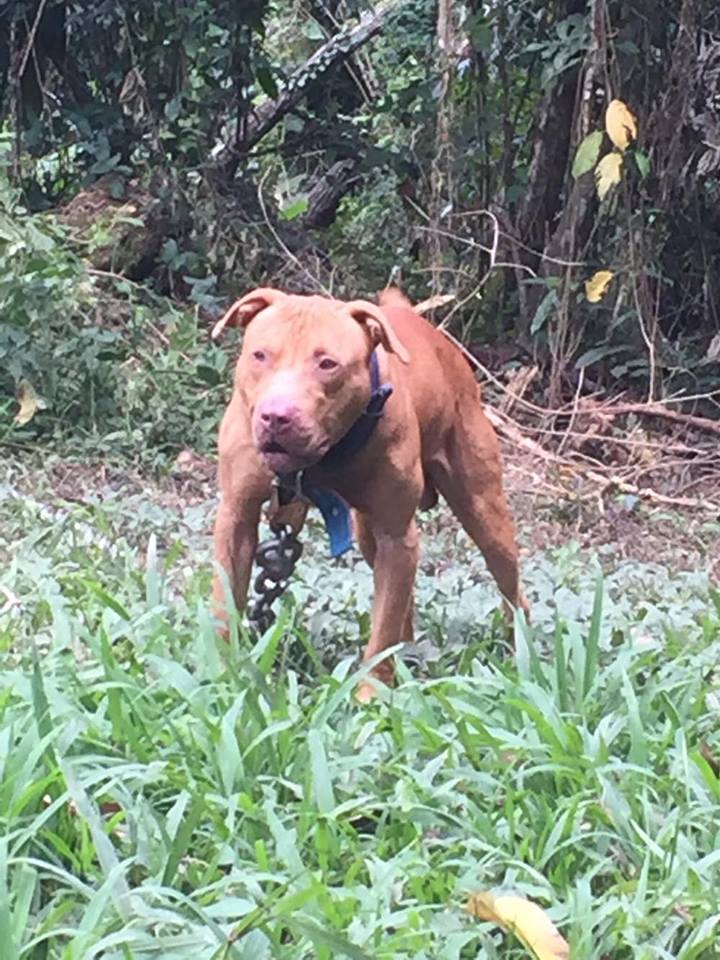
Comments on the Mentioned Strains
There are people today who condemn the Colby dogs as having a low percentage of game dogs. But people have a tendency to leap to conclusions. These days there are not that many Colby dogs being used in the pit, so if you see one bad one and that’s the only one you see, you will tend to think of them all that way. The truth is that the Colby line was known for producing a lot of good dogs in terms of both ability and gameness. Armitage’s nominee for the greatest dog he ever saw, Kager, was a Colby dog, but he neglected to mention that. In the final analysis, it depends on who has been breeding the dogs, and how selective they were, whether or not they are good, game dogs. Certainly, just keeping a strain pure doesn’t guarantee that it will stay good.
The Old Family Red Nose line was known primarily for its deep gameness and for the fact that it seemed to cross well with any quality line. It was also renowned for the intelligence of the dogs and their ring generalship, knowing to pace themselves and when to step up the pace.
Wallace was an absolute crank on gameness, so that is what his dogs were known for. It was interesting that he started with Searcy Jeff, as no one was sure whether he was game, as no dog could make him prove it. But Bob used three dogs in turn to make sure that Jeff was game. Eventually, he had to take the bottom, but he was still crying for more, even when he was beat up and worn down. (This was after Bob paid a king’s ransom for the dog!)
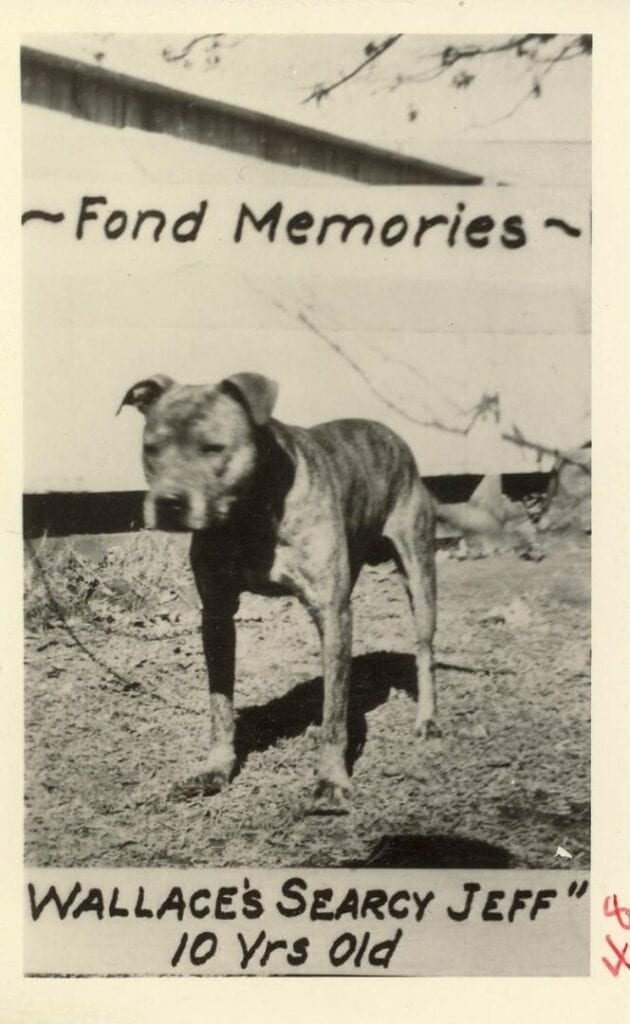
Another example of Bob’s passion for gameness was that he never bred to Pistol Pete, a son of Jeff, even though he was a five-time winner. The problem was he got counted out against Hubbard’s Big Boy. Leo Kinard was handling, and he maintained that the dog couldn’t see his opponent because of the beating he took on the head. So he pulled the skin back to where Pete could see the other dog, and he scratched. But that wasn’t good enough for Bob.
Comments on Pure Strains
There is a certain romanticism to maintaining a pure line. But does it ruin a line to cross it to another? It depends on the line, of course, but in my experience it doesn’t ruin any line—except that it now is no longer pure. I think the old hesitance about rank outcrosses was partly from the mistaken idea that heredity was carried by blood instead of DNA. For a long time, even scientists thought of heredity in terms of blending instead of Mendelian genetics. Although Mendel’s ideas helped explain a lot of the idiosyncrasies of heredity, it can be oversimplified, as many traits are polygenetic (involving many genes), and don’t follow strictly the rather simple “bean bag†traits that Mendel explored. But I digress. The main point is that the old time breeders didn’t know about modern genetics because DNA was not discovered until about the middle of the last century, and our breed has been around a lot longer than that.
Obviously, if you have a great line that produces uniformly good dogs, you could ruin it by crossing it to a poor line. Or you could ruin it by breeding to a really great dog that was descended from pretty mediocre ancestry. It is like marrying a girl who is beautiful, but she is the exception in the family. If her grandparents and parents were clock stoppers, don’t expect your children to inherit her beauty.
So purity does have its merits, but we don’t have to be fanatical about it. “Scatter bred†has become the ultimate insult to the pedigree of a dog. But if all the individuals in the pedigree were of high quality, there is really nothing wrong with that. When you think about it, our breed is a closed genetic system in itself. However in these days of unreal popularity of the breed and some obviously questionable specimens being registered as APBTs, it may be best to buy from breeders that specialize in a particular line. I have deliberately stuck to only older lines in this article, but there are many good newer strains out there. And most of them can be recommended.
“ Many other strains, such as the once-famous Henry line and, possibly, the latter-day Lightner dogs, originated from Colby dogs.“
I was of the opinion that the black coated, orangish-eyed, black gummed Henry dogs were imports from England. I recall reading an article, “The Oklahoma Kid” (Earl Tudor) explain that. He also said he was still importing stock in the 60’s.
Interesting.
Another “rabbit hole” to dig into.
Thanks.
Lou Colby is the one that told me about Henry getting his dogs from his father, and he registered some of them with the AKC as Pit Bull Terriers! That was way back around the start of the century, but the Henry dogs were still around in my youth. Earl Tudor was many things, and he was a good dog man, but I wouldn’t hang my hat on his history.
Thank you for the insight! I find chasing the history of this phenomenal animal to be absolutely addictive. I know some of that blood was used to create the American Staffordshire Terrier but I’ve not been able to locate any of that blood in any appreciable degree. From what I’ve been told the dogs “became too difficult”: hard to breed and the females were hard on the pups. It became “too much work”. That they were high-strung, Earl is documented to have claimed so. Perhaps there is some truth to that story.
Thank you for the website. Thank you for all of your books. I purchased your first book when I was in the 7th grade with my own money. I read that book every couple of days until it fell apart. I now have two copies of each of your books – one to peruse occasionally and the other to store for history. Maybe in one hundred years there will be someone like myself asking about these dog and they can find your material and others as well as Sporting Dog Journals from over the years. In that way they won’t have to rely on speculation. I try to document height and weight of any dog that is photographed such that people in the future won’t have to speculate as we now have to.
PS.
You mentioned the Alaunt in your first book and it bothered me for twenty years when I started researching Bulldog history in 2000. When I stumbled across the name I smiled. Thanks, brother.